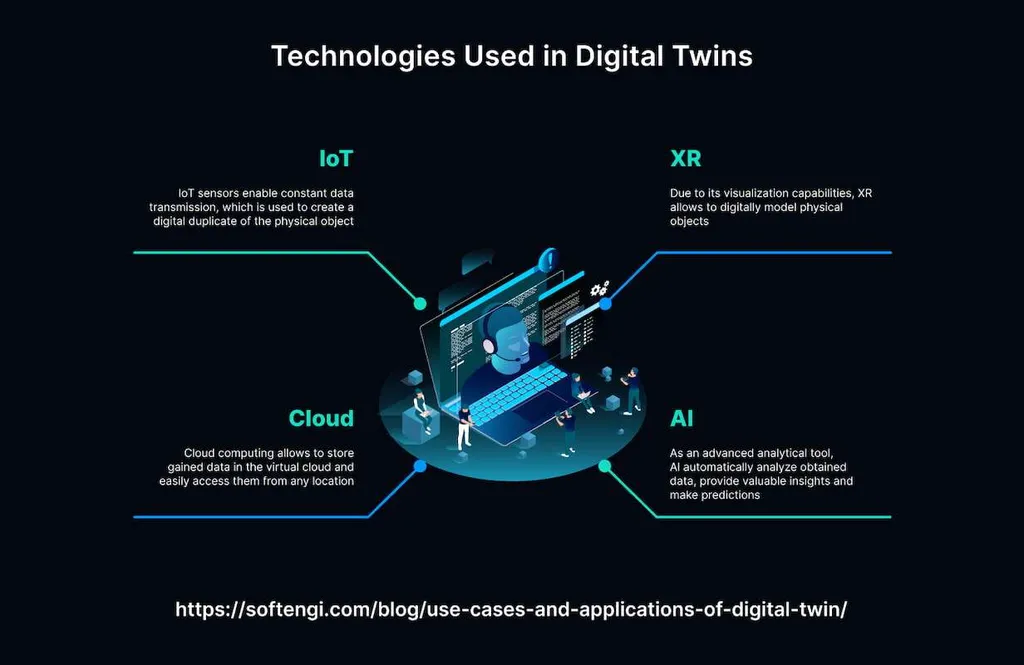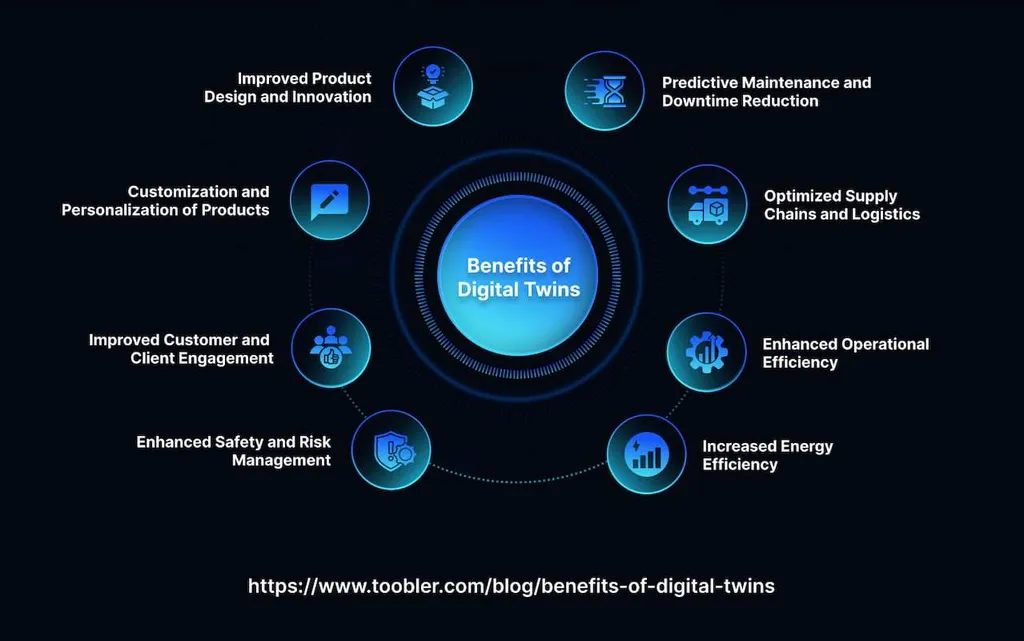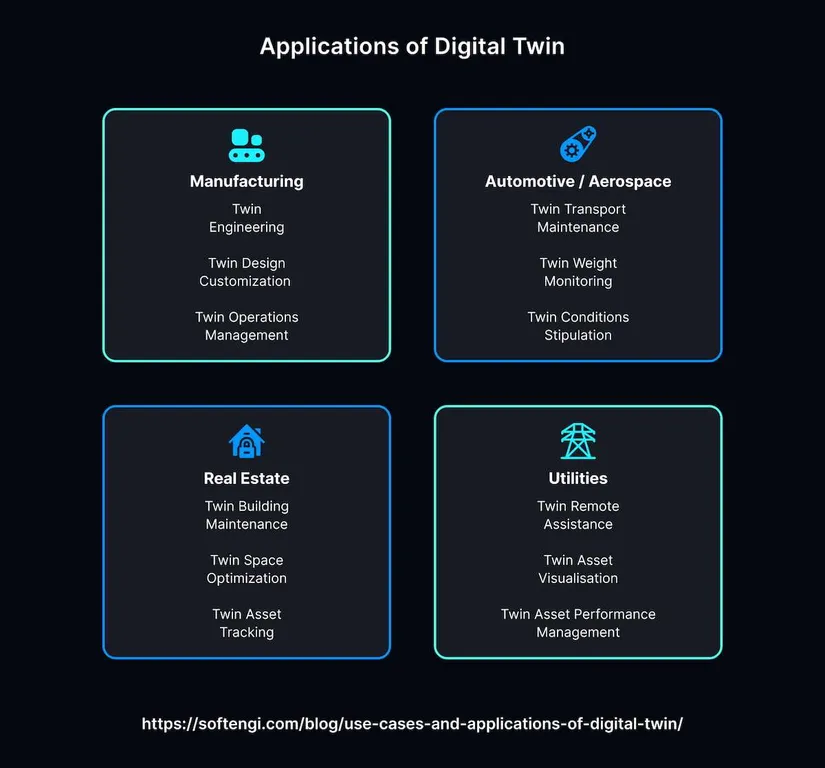The evolution of artificial intelligence (AI) technology has transformed marketing practices. Using predictive analytics tools, companies can now focus on customer journey optimization (CJO) and strengthen their relationships with their clientele. Instead of relying on traditional buyer profiles, marketers analyze dynamic avatars based on regularly updated data. Because of the increasing importance of privacy laws, the creation of a digital twin of a customer (DToC) emerges as a highly reliable and efficient method of testing and implementing fact-based advertising strategies. In this guide, we will analyze the meaning of the concept and demonstrate how it lets entities augment and personalize client experience (CX).
What is DToC?

A virtual avatar of a buyer or a target group helps businesses analyze and predict consumer behavior. It uses reliable data to replicate clients’ actions in an online environment. The usage of DToCs enables firms to leverage AI and machine learning (ML) models to construct a realistic portrait of an average client. Such tools are especially useful when a firm needs to simulate actions and forecast future changes.
The rapid development of generative AI made DToCs accessible to users with different skills and backgrounds. Accessing DToCs via a conversational interface allows enterprises to get valuable insights and tweak their marketing efforts. Companies like MetaDialog recognize the power of large language models (LLMs) and build custom solutions, helping businesses establish strong relationships with their clientele. When integrated with digital twins, LLMs allow enterprises to extract up-to-date information and optimize processes.
Different types of DToCs have the following applications:
- Descriptive: Twins serve as easy-to-edit versions of objects or system data.
- Informative: Versions provide accurate info about performance-related issues.
- Predictive: DToCs generate information that allows companies to schedule repair sessions, replenish stocks, and perform a range of tasks.
- Comprehensive: Such personas enable enterprises to see how likely developments can impact the situation and lead to specific outcomes.
- Autonomous: DToCs reproduce various behaviors, enabling firms to see how strategy adjustments allow them to deal with current challenges. They function without human supervision.
The usage of digital twins allows companies to understand how objects react to changing environments, optimize the manufacturing stage, minimize the time to market, and expedite organizational processes.
Benefits of DToCs

The usage of consumer twins allows ventures to discover valuable findings and make accurate guesses about a client’s conduct. The in-depth analysis of a virtual persona facilitates CJO, making DToCs invaluable for marketing purposes.
Providing personalized services necessitates mapping client actions and making the offerings provided by a venture more accessible. Boosting the conversion rate requires analyzing behavioral data and using the unveiled insights to improve CX. For instance, an entity can integrate convenient payment methods, strengthen security, or increase accountability and transparency to build lasting relationships with its audience. Below, we have listed the main advantages of deploying DToCs:
- Customization: Launching personalized marketing campaigns requires analyzing historical facts and identifying trends. Using dedicated tools, firms detect buyer habits and take the necessary steps to increase commitment and conversions.
- Improved brand image: By prioritizing CX, ventures discover how consumers interact with their brand across various channels. Digital twins are instrumental to enhancing the perception of a brand and shaping it in the desired way. According to statistics, 52% of people switch to competitors if they have an unfavorable impression of a brand. Businesses that prioritize CX increase their revenue by up to 80%. A DToC allows enterprises to adjust their marketing strategies and ad campaigns without delays and strengthen a positive perception of a brand.
- Streamlined consumer journey: The deployment of DToC allows organizations to eliminate barriers and improve CX by upgrading the checkout page, adding engaging CTAs, and creating detailed product descriptions. Individuals can choose the optimal option at each stage of their interaction with a brand. Using DToCs, marketing professionals identify issues affecting the retention rate and discover strategies to gain client trust. According to stats, 70% of top managers at major corporations already benefit from buyer’s portraits. The industry is predicted to grow 30%-45% per year. Firms create virtual copies of web-based stores and utilize DToCs to see how the audience reacts to changes. It allows marketing specialists to come up with personalized offers to ensure high client satisfaction.
- Detailed information about buyers: Small and medium-sized companies do not have enough resources to build massive datasets containing info about buyers’ behavior and transaction history. According to Gartner, only 14% of businesses have a comprehensive picture of clients. In the coming years, it will be even more challenging to find the necessary info while maintaining regulatory compliance. However, as DToCs utilize first-party info, they are suitable for creating a realistic persona without breaking current laws.
- Synthetic personas: LLMs create accurate representations of clients. Gen AI models create these personas based on prompts with comprehensive descriptions. Entities utilize synthetic personas to test the efficiency of ads on their eCommerce platforms or check whether product designs appeal to their target audience. LLMs can answer surveys and provide insights about the preferences of a specific audience segment. Organizations should utilize high-quality datasets to train such models and come to weighted conclusions.
Recent findings demonstrate the importance of DToCs for collecting insights into client habits and improving offerings to augment CX.
Main Steps to Create Customer Digital Twins
When creating a DToC, a firm must task its IT department with auditing the available data to check whether it has enough facts about the audience’s preferences. It’s pivotal to consider the reasons for using DToCs and the goals a firm intends to reach. Enterprises can follow such recommendations to generate a fact-based DToC:
- Visualize buyer personas: Collect information and utilize it to produce detailed representations of consumers. According to ITSMA, 44% of experts who specialize in advertising use this approach to make their strategies result-yielding. They utilize insights about demographics, financial transactions, and interactions with the CS team. By aggregating insights from various sources and analyzing information for each segment, it becomes possible to appeal to a specific group of individuals sharing some common traits.
- Analyze the potential appeal of a DToC: Consider the value this method has for buyers and the venture.
- Build a detailed profile: It allows organizations to predict consumer actions during different stages of their interaction with a brand.
- Improve the quality of datasets: A firm may use gadgets, smart devices, or advanced analytics tools to refine the available information. Market research and thorough exploration of interactions on social network are other strategies a company may implement at this stage.
- Embrace a transparent approach: Make sure buyers understand how their data is handled and how you record information about their interactions with a company.
- Make a DToC an integral part of internal business processes: After building e-twins, enterprises analyze them to improve products and CX. Seasoned experts should utilize this method to cater to the needs of different audience segments. Updating DToCs regularly is crucial to ensure they remain relevant.
As it may be daunting to create and use DToCs, some ventures outsource the task of building custom LLMs to experienced professionals. MetaDialog has experts who create personalized solutions for businesses from many industries, helping them leverage AI technology and implement time-tested digital twin customer experience practices.
How to Use DToCs

Most companies prefer to utilize online personas to recreate typical behaviors in different situations. It allows them to accurately forecast what products potential buyers are interested in, consider the churn rate, predict changes in purchasing patterns, and enhance CX. Utilizing a digital twin of a customer requires a venture to follow such stages:
- Based on DToC, a firm develops custom offerings to ensure a client will be motivated to purchase additional products or services;
- If a client buys the main product and clicks on an extra package but does not purchase it, a firm should send a follow-up email with a personalized offer;
- When the purchase is done, a service provider further upgrades its DToCs and incorporates new findings to improve consumer interactions.
The usage of gen AI allows businesses to unlock new development opportunities and significantly upgrade CX. The responsible use of DToC helps firms maintain transparency and avoid fines. Digital twins make it easier for organizations to create hyper personalized offerings and reduce churn.
DToC Examples Across Industries
While DToCs are widely used by retailers seeking to create a dynamic buyer duplicate, they also have extensive applicability in other sectors. Professionals working with athletes deploy them to alleviate risks and obtain information that is difficult to discover without relying on personal experience. Athletes may use a DToC to prepare for a competition and calculate their chances of prevailing over other professionals under specific conditions.
The usage of DToCs by retail business owners has become widespread. They allow companies to elevate shopping experiences and leverage motion sensors to get insights into buyer’s purchase behavior. With the help of digital twins, enterprises can:
- Predict when buyers are likely to make a repeat purchase;
- Improve the store’s UI to make it easier to navigate;
- Hire staff to scale up operations
- Map a client journey using AI-driven tools.
Digital twin technology allows retailers to provide an immersive shopping experience and make CX enjoyable by tracking buyers’ actions across multiple platforms. Using the power of LLMs, they generate realistic virtual consumers and track the impact of a changing environment.
Tips and Recommendations
When generating a character to create digital twins, many organizations use web-based tools or outsource this task to experienced providers. Building a dynamic persona based on actual data requires using ML models to create detailed overviews of consumers using the following sources:
- Information received via CRM systems
- Web and social media analytics
- Surveys
- Competitor analysis
- News
- Online feedback
When creating persona cards, it’s essential to summarize information about audience segments. It allows companies to find out more about the choices, preferences, and barriers of specific demographics.
By using journey variations, businesses discover how clients interact with their platforms. It’s crucial to ensure that personas get updated swiftly with new information. It allows firms to update strategies and expand their audience.
Even though DToC is still in the early adoption stage, marketers who want to achieve stable growth for their brands should leverage it when working on long-term campaigns. It allows specialists to discover unusual facts about clients’ needs and motivations. The analysis of data-driven insights facilitates content creation and allows organizations to create targeted ads.
Besides, DToCs help firms optimize CX and ensure sustainable growth. Adapting to third-party sources is no longer sufficient. Companies should utilize digital twins to collect detailed information about their clients without compromising their privacy.
LLMs built by MetaDialog’s team facilitate the creation of a powerful system that improves its performance automatically. The usage of AI enables entities to deploy a digital twin of a customer and produce actual value. Get in touch with our experts and discover how to analyze your clients’ habits using AI-driven models and create personalized offers to boost your sales.
